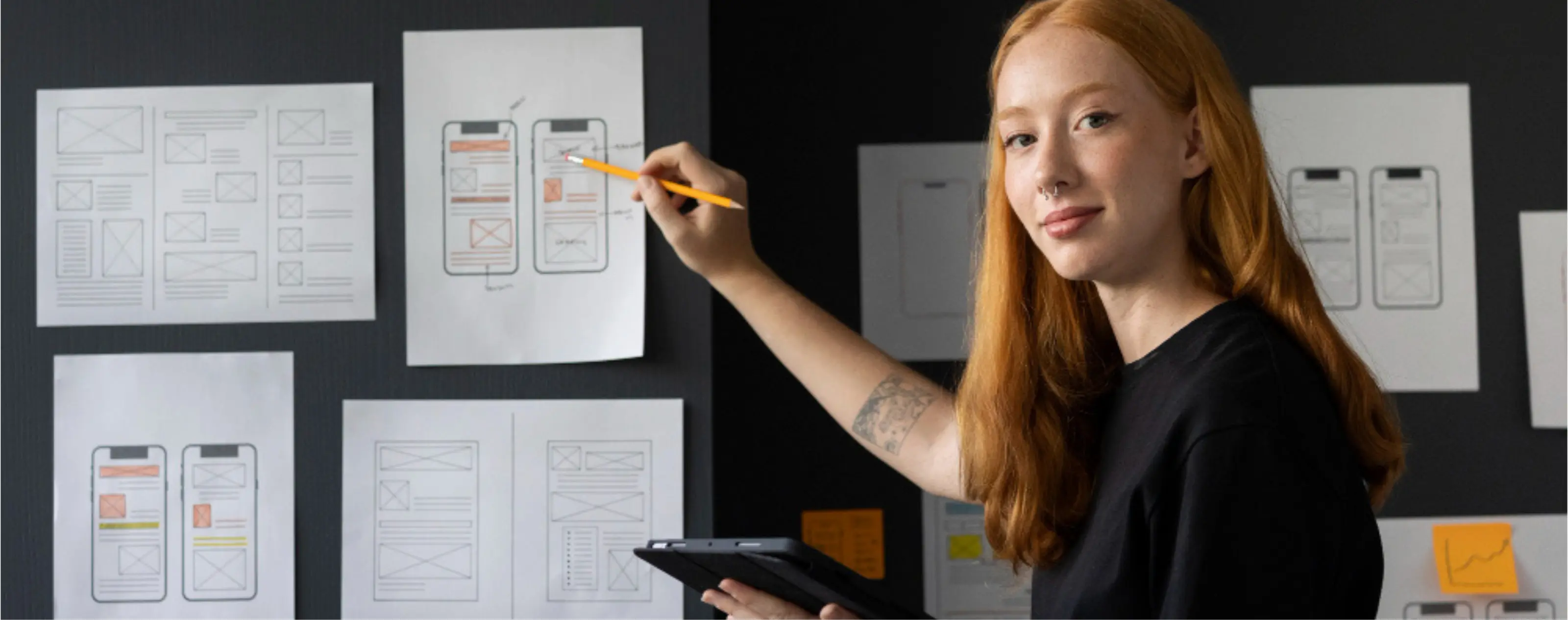11205, Knolls End Spotsylvania, VA 22551, United States
Agile Coaching for Designers: How to Effectively Participate in Agile Software Development

Agile Coaching for Designers: How to Effectively Participate in Agile Software Development
Designers are an essential part of Agile software development teams. They create user-centered design solutions that cater to the needs of the customers and contribute to the project's success. However, designers can face unique challenges when working in an Agile environment. Agile coaches can help designers overcome these challenges and effectively participate in Agile software development. In this blog, we will provide an overview of how Agile coaches can support designers in Agile software development.
Encouraging Collaborative Work
Agile methodologies prioritize collaboration, and Agile coaches can help designers work collaboratively with developers, product owners, and other stakeholders. Working together can help designers better understand the customer's needs and work more efficiently to contribute to the project's success.
Fostering an Agile Mindset
Designers may not have a full understanding of Agile methodologies, but Agile coaches can help them adopt an Agile mindset. An Agile mindset is an attitude of collaboration, flexibility, and responsiveness to change. By embracing this mindset, designers can have a better understanding of their role in the project and work more effectively with the rest of the team.
Facilitating Design Sprints
Design sprints are an essential tool in Agile software development that enable designers to quickly create and test design solutions. Agile coaches can facilitate design sprints and help designers participate in them effectively. Facilitating design sprints can enhance the quality of design solutions and improve the speed of the development process.
Providing Feedback and Coaching
Agile coaches can provide feedback and coaching to designers. They can review design solutions, provide guidance on effectively participating in Agile software development, and help designers continuously improve their skills.
Supporting Continuous Improvement
Agile methodologies stress the importance of continuous improvement, and Agile coaches can help designers identify areas of improvement and implement changes that will contribute to the project's success. Improving collaboration, enhancing design quality, and increasing efficiency are examples of how designers can contribute to continuous improvement.
Conclusion
Designers play an important role in Agile software development, but they may face challenges when working in an Agile environment. Agile coaches can help designers overcome these challenges and contribute to the project's success. By encouraging collaborative work, fostering an Agile mindset, facilitating design sprints, providing feedback and coaching, and supporting continuous improvement, Agile coaches can help designers effectively participate in Agile software development.
If you're a designer looking to improve your skills and effectively participate in Agile software development, consider working with an Agile coach. The Agile Site is a great resource for learning more about Agile coaching and its benefits for designers. With the help of an Agile coach, designers can enhance their skills, contribute to the success of the project, and deliver value to the customers.
ABC Inc. is a software development company that adopted Agile methodologies to enhance its development process. The company had a design team responsible for creating user-centered design solutions. However, the team struggled to effectively participate in the Agile development process. They lacked an understanding of Agile methodologies and how to effectively collaborate with developers and other stakeholders.
ABC Inc. hired an Agile coach to help the design team. The coach started by fostering an Agile mindset among the designers. They provided training sessions on Agile methodologies and explained how they apply to design work. The coach emphasized the importance of collaboration, flexibility, and responsiveness to change in the Agile development process.
The coach then facilitated design sprints, which helped the design team to quickly create and test design solutions. The sprints enabled the designers to work collaboratively with developers and other stakeholders, which enhanced the quality of design solutions and speeded up the development process.
The coach also provided feedback and coaching to the design team. They reviewed design solutions and provided guidance on how to effectively participate in Agile software development. The coach helped the designers continuously improve their skills, which contributed to the project's success.
As a result of the Agile coach's intervention, the design team became more effective in the Agile development process. They embraced an Agile mindset, worked collaboratively with developers and other stakeholders, and continuously improved their skills. The design team's contributions helped ABC Inc. deliver high-quality products that catered to the customers' needs.
This example illustrates how an Agile coach can help a design team effectively participate in Agile software development. By fostering an Agile mindset, facilitating design sprints, providing feedback and coaching, and supporting continuous improvement, the Agile coach enabled the design team to contribute to the project's success.
If you're a design team looking to effectively participate in Agile software development, consider hiring an Agile coach. An Agile coach can help you understand Agile methodologies, collaborate with developers and other stakeholders, and continuously improve your skills. For more information on Agile coaching and its benefits, visit TheAgileSite.com.

